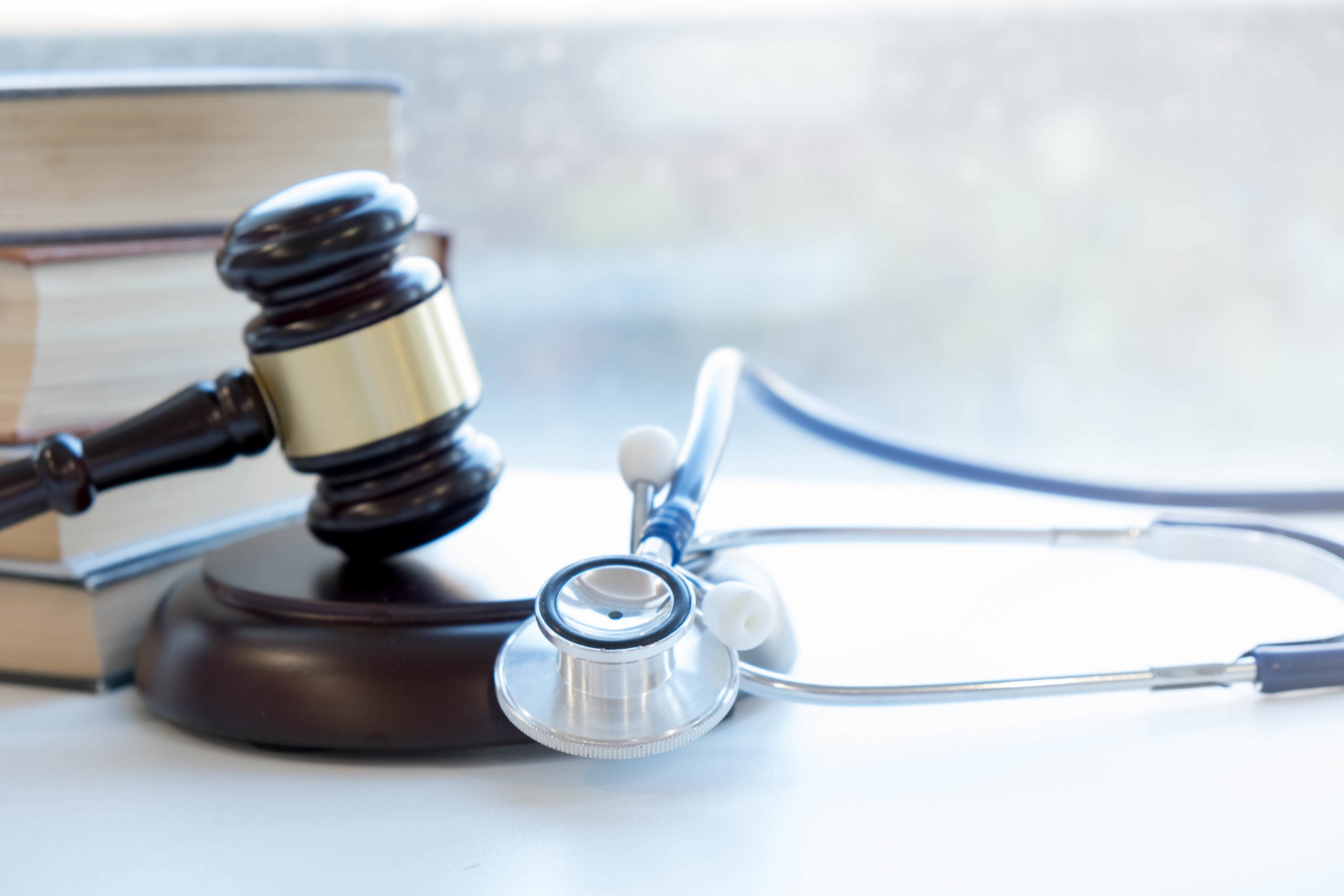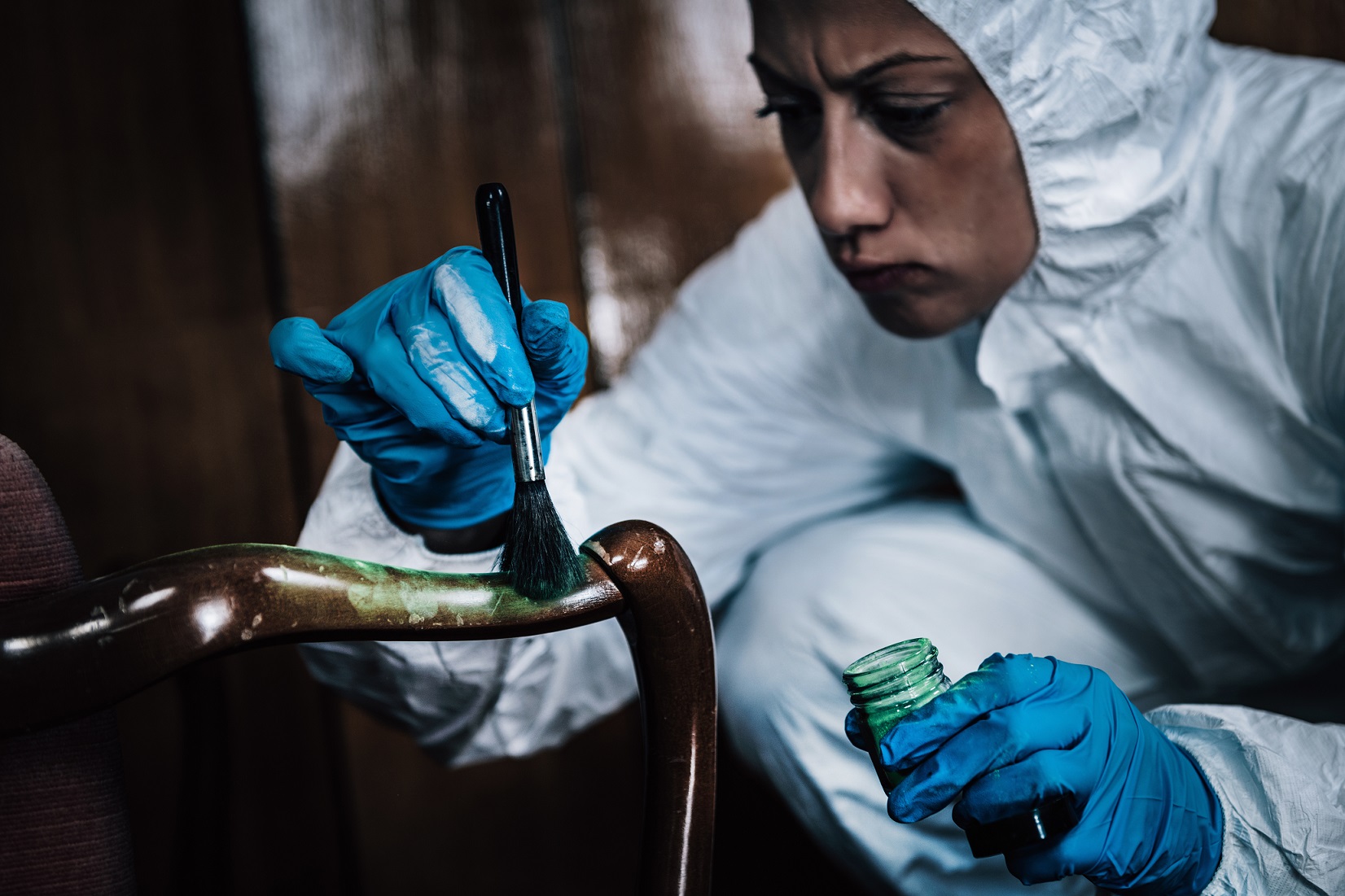Now Reading: Medical Jurisprudence and Related Laws in India
-
01
Medical Jurisprudence and Related Laws in India

Medical Jurisprudence and Related Laws in India
MEDICAL JURISPRUDENCE is the application of medical knowledge in the legal field for providing justice in both civil as well as criminal cases. It provides the basic legal guidelines which should be followed by a medical practitioner.
The Latin term ‘juris’ stands for ‘law’ and ‘prudentia’ stands for ‘knowledge’. Thereby, it is the domain which makes the use of the medically relevant facts and then integrates them with the legal system, providing assistance to the criminal justice system.
In order to convict a probable offender, it is utmost important to know the relevancy of the evidences. Thus, the need of using scientific principles was felt.
As this field grew, it gave immense power to the medical practitioner/doctor as they were now playing a very important role by having an expert opinion in the cases.
But with this power came huge responsibilities. The doctor patient relation, medical negligence, ethical conducts, professional misconducts are a few to name.
The field of medical jurisprudence is a very ancient field but with the advent of technology and the reforms being added in the legal system, this branch is always under development.
In order to completely understand true meaning and its importance one should understand how actually did this field came into action.

Fig. 1 – “This image is taken from Practical forensic medicine [electronic resource]: a police-surgeon’s emergency guide” by Medical Heritage Library, Inc. is licensed under CC BY-NC-SA 2.0
The HISTORY of medical jurisprudence dates back to 4000-3000 BC and the data recorded can be studied from the Materia Medica. Imhotep (around 2300 BC), the chief justice and the personal physician to the ruler of Egypt was considered as the first medicolegal expert.
Fig. 2 – “NYC – Brooklyn Museum – Statuette of Imhotep” by wallyg is licensed under CC BY-NC-ND 2.0
While in India, the Charaka Samhita (around the 7th century BC) contained rules related to the ethics, duties, privilege, etc. mandatory to be followed by a physician. Various other texts like Manusmriti, Sushruta Samhita, Yajnavalkya Smriti, etc. also played a major role in maintaining and regulating the medical practice.
An autopsy is considered as the most important tool in medicolegal practice. In the 18th century Dr. Edward Bulkley was the first to perform a medico-legal autopsy in India.
With the introduction of this branch in India, it didn’t take much of a time for it to grow in all directions. In 1822, the state of Calcutta got the countries first medical school. This development further proceeded to the states of Madras and Bombay.
Fig. 3 – “This image is taken from Page 160 of Clinical manual for India: compiled for the use of the students of the Madras Medical College” by Medical Heritage Library, Inc. is licensed under CC BY-NC-SA 2.0
Over the last few decades, the scientific techniques have advanced by multiple folds. The tests performed and the results obtained are so precise that they can act as evidence, sufficient in itself to prove or disprove a convict.
This growth has also led to the enlargement and thus diversification of medical jurisprudence into numerous small branches.
To fit more accurately in the present time, the term medical jurisprudence has mostly been replaced by the new terminology ‘FORENSIC MEDICINE’.
Some of the major branches in FORENSIC MEDICINE are:
· forensic pathology,
· forensic odontology,
· forensic toxicology,
· forensic anthropology, etc.
Due to the indispensable efforts in this field, Dr. J.P. Modi is renowned as the Father of Indian Forensic Medicine.
Before getting into the details, it is very crucial to understand the true significance and seriousness of forensic medicine to different professions.
The major professions involved in legal cases are:
· medicine department; consisting of doctors, nurses, pharmacists
· legal department; consisting of lawyers, judges, police
For enhancing the knowledge of a personnel of medical background different courses in forensic medicine have been introduced in their curriculum. Along with providing legal
guidance this course focuses on training the doctors in the major advancements in the forensic medicine field, their responsibilities, rights, ethics, etc.
By providing scientific evidence and assisting the judiciary and legal system, the medical field helps in strengthening the ultimate of providing justice and thereby, benefitting all.
The legal practitioners i.e., the lawyers who may have to time and again encounter the medical issues in their practice are hardly aware about the medical language, knowledge, profession and the associated complexities of this profession.
The profession of a medical personnel is considered as being the next to God. But are doctors really God? This is a question that arises time and again in the medical fraternity.
William Osler wrote: “Medicine is a science of uncertainty and an art of probability. Absolute diagnoses are unsafe and are made at expense of the conscience”
The doctors are also humans and it is impossible for them to be unerring. When a simple mistake of a doctor leads to the loss of a life, he is answerable to the system.
In a hypothetical case, if a patient dies due to a hypersensitive allergic reaction from a certain drug, which is widely accepted by the majority of the population then is the death to be considered as the fault of the doctor. The patient’s family may file a report against the doctor for medical negligence. The lawyers working on the case on behalf of the doctor and the patient, should have ample knowledge for understanding the reasons which led to the sudden death. This is how medical jurisprudence will help in determining whether the doctor is supposed to be held guilty or not.
Many times, in a bizarre circumstance, the doctors keep aside their legal restrictions and prioritize the patient’s wellbeing and this often leads them as guilty in the court. To avoid and keep such actions under a check, hospitals have their own legal firms who timely monitor the work of the doctors.
While considering medical jurisprudence one cannot brush aside certain controversial areas like role of doctor for evidence collection from crime scene, mercy killing, organ transplantation, medical negligence, civil negligence, malpractice, therapeutic misadventure, etc.
From the world of fiction to reality, the cases of Anaesthetic and Operative Deaths are always under the limelight.
The causes of death due to anaesthetic agents can be found out via post-mortem examination. These causes may include; hypersensitivity, cardiac arrest, respiratory inadequacy, etc. The cardiac arrest and respiratory failure are the most common modes of death.
These cases often invite an investigation on the medical personals involved in the procedure. Legal department overlaps here with the medical department and helps in figuring out whether it was a medical negligence or a medical maloccurence.
Some of the most common cases under medical jurisprudence include:
· paternity testing
· injury and wounds
· death due to poisons
· cause and manner of death
· violent death, etc.
Fig. 4 – “Know your future for only 999$ with DNA test _DDC6259.JPG” by Abode of Chaos is licensed under CC BY 2.0
To understand the legal portion under medical jurisprudence, it is essential to understand structure under which the laws are classified in The Indian Judicial System. The following ACTS can be seen as the pillars of justice.
1. INDIAN PENAL CODE, 1860
2. INDIAN EVIDENCE ACT, 1872
3. CODE FOR CRIMINAL PROCEDURE, 1973
4. INDIAN MEDICAL COUNCIL ACT,1956
LAWS RELATED TO MEDICAL JURISPRUDENCE IN INDIA:
Ø INDIAN PENAL CODE, 1860
· Section 44 of IPC: Definition of Injury. Any harm whatever illegally caused to any person in body, mind, reputation, or property.
· Section 319 IPC: Hurt. Hurt means bodily pain, disease, or infirmity caused to any person.
· Section 320 IPC: Grievous Injury Any of the following injuries is grievous:
1. Emasculation (Depriving a male of masculine vigor)
2. Permanent privation of sight of either eye
3. Permanent privation of the hearing of either ear
4. Privation of any member or joint (member means an organ or a limb being part of man capable of performing a distinct function)
5. Destruction or permanent impairing of powers of any member or joint
6. Permanent disfiguration of the head or face
7. Fracture or dislocation of bone or tooth
8. Any hurt which endangers life, or which causes the victim to be in severe bodily pain, or unable to follow his ordinary pursuits for a period of 20-day.
· Section 321 IPC: Defines “Voluntarily Causing Hurt”.
· Section 322 IPC: Defines “Voluntarily Causing Grievous Hurt”.
· Section 351 IPC: Defines Assault: Threat/attempt to apply force. Whoever makes any gesture or preparation intending or knowing, it to be likely that such gesture or preparation will cause any person present to apprehend that he who makes the gesture or preparation is about to use criminal force to that person, is said to commit an assault.
· Section 323 IPC: Describes Punishment for Voluntarily Causing Hurt. Shall be imprisonment which may extend for 1 year with or without fine which may be Rs. 1000.
· Section 324 IPC: Describes Punishment for Voluntarily Causing Hurt by dangerous weapon shall be imprisonment for up to 3 years with or without fine.
· Section 325 IPC: Describes Punishment for Voluntarily Causing Grievous Hurt. Shall be imprisonment which may extend for 7 years with or without fine.
· Section 326 IPC: Describes Punishment for Voluntarily Causing Grievous Hurt by dangerous weapon or means. Shall be imprisonment for life or for 10 years with or without fine.
· Section 328 IPC: Punishment of causing hurt using poison, etc., shall be imprisonment up to 10 years with or without fine.
Ø INDIAN EVIDENCE ACT, 1872
· Section 45: Opinions of experts. When the Court has to form an opinion upon a point of foreign law or of science or art, or as to identity of handwriting, the opinions upon that point of persons especially skilled in such foreign law, science or art, are relevant facts. Such persons are called experts.
· Section 114A: In a prosecution for rape, where the question is whether sexual intercourse was without the consent of the woman, and she states in her evidence that she did not consent, the court shall presume that she did not consent.
Ø CODE FOR CRIMINAL PROCEDURE, 1973
· Section 53 (i) CrPC: An accused may be examined by a medical practitioner at the request of a police officer using reasonably necessary force.
· Section 53 (ii) CrPC: Whenever the person of a female accused is to be examined, the examination shall be made only by or under the supervision of a female registered medical practitioner.
· Section 54 CrPC: An arrested person may be examined at his request by a medical practitioner to detect evidence in his favour.
· Section 174 CrPC: Police to enquire and report on suicide, etc.
· Section 176 CrPC: Inquiry by Magistrate into cause of death.
Ø INDIAN MEDICAL COUNCIL ACT,1956
· Section 20A- Professional conduct: 1) The Council may prescribe standards of professional conduct and etiquette and a code of ethics for medical practitioners.
2) Regulations made by the Council under sub-section
(1) may specify which violations thereof shall constitute infamous conduct in any professional respect, that is to say, professional misconduct, and such provision shall have effect notwithstanding anything contained in any law for the time being in force.
According to the Current Indian Scenario, there are certain drawbacks with respect to these laws.
Irrespective of having several indispensable benefits, the evidences procured via medical jurisprudence are still considered under the expert opinion rather than a primary evidence.
Under the Indian Evidence Act, 1872 only in certain cases the report of an autopsy procedure is considered as a documentary evidence.
Doctors are bounded by the doctor-patient confidentiality and this often places them in a dilemma of whether to share the information or not with the legal system.
If it is in the doctor’s knowledge that any of his patient has committed a crime (other than suicide), then he is bound to inform the legal authorities. In failing to do so, he may be punished.
Thus, clear briefing to the doctors on these pre-existing laws and amendment in certain conflicting laws is the need of the hour. A few suggestions would be;
o legal drafting of legislation which will consider the evidences of medical jurisprudence as a primary evidence.
o Other scientific test results, when performed under standard testing protocol, must also be considered as documentary evidences.
o If a patient tries to commit suicide the doctor must report to the concerned authorities as this may help in resolving the factors which may have led to such a huge step by the victim and also ensure the patients safety in the near future.
Medical jurisprudence plays a very crucial role in bridging this gap between the doctors and the lawyers. This field has contributed to the society by opening the new doors to those old pending cases, which were once considered to be stuck at a dead end.
The personnel working in the legal and medical professions must join hands and help each other in providing the field of medical jurisprudence the due credit that it deserves since a very long time.Hence, Medical jurisprudence can be seen as the kaleidoscope of new possibilities.
REFERENCES:
· BIBLIOGRAPHY Aggrawal, A. (n.d.). Textbook of Forensic Medicine and Toxicology . AVICHAL PUBLISHING COMPANY.
· Britannica, T. E. (August 18, 2011). Medical jurisprudence. Encyclopædia Britannica.
· CODE FOR CRIMINAL PROCEDURE. (1973).
· CREATIVECOMMONS. (n.d.). Retrieved from https://search.creativecommons.org/
· Dr. K.S. NARAYAN REDDY, D. O. (1973). THE ESSENTIALS OF FORENSIC MEDICINE AND TOXICOLOGY. Jaypee Brothers Medical Publishers (P) Ltd .
· DUHAN, R. (2016). FORENSIC MEDICINE AND INDIAN CRIMINAL LAWS: A STUDY OF RELEVANCY WITH LEGAL. Innovare Journal Of Medical Sciences.
· INDIAN EVIDENCE ACT. (1872).
· INDIAN KANOON. (n.d.). Retrieved from https://indiankanoon.org/
· INDIAN MEDICAL COUNCIL ACT. (1956).
· INDIAN PENAL CODE. (1860).
· Rao, N. G. (2000). Textbook of Forensic Medicine and Toxicology. JAYPEE BROTHERS MEDICAL PUBLISHERS (P) LTD.
· Venkataramani, S. (n.d.). Legal Service India – Lawyers. Retrieved from http://www.legalserviceindia.com/: http://www.legalserviceindia.com/articles/medooo.htm












